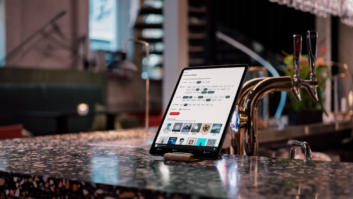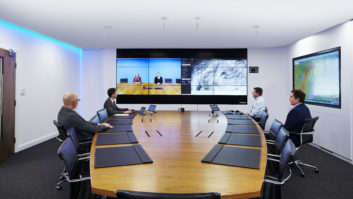
After outlining the main immersive/3D audio solutions, David Davies looks into the importance of versatility in the solutions as well as the emerging applications that companies are targeting.
In general, developers of immersive audio technologies are at pains to stress the versatility of their solutions, with target applications ranging from large cinemas to cars. This broadly based approach is perhaps unsurprising when the not-exactly-spectacular adoption rates of conventional 5.1 in the residential sphere are taken into account.
So for example, Iosono is designed to be “versatile and efficient in set-up and use in many different applications, such as themed entertainment, planetarium/domes, live sound, studios, VR, showrooms and more”, says Barco senior director strategic business development entertainment Brian Claypool, adding that “the specifics of the type of install and application are taken into account during system design and configuration. We are strong at consulting and supporting our clients during [conception] and planning.”
Public cinemas and broadcast (particularly for sports) are among the markets cited for Auro-3D, although Auro Technologies’ CEO, Wilfried Van Baelen, also makes a point of highlighting several emerging applications: automotive and gaming. “Next year we will have the first Auro-3D integrated cars coming to the market, delivering a complete new and relaxing driving experience because the Auro-3D audio quality and its natural spread of sound all around make it easier for our brain to analyse the soundfield. And can you imagine how much more fun playing games is using the Auro-3D system and feeling the enemy all around and above you? We are using all existing delivery formats without the need for extra bandwidth to bring this totally new immersive experience with high-res audio in each channel to all markets.”
For Dolby Atmos, an initial focus on public cinemas appears now to be expanding to encompass home set-ups. Jonathan Jowitt, evangelist content and e-media solutions, Dolby Laboratories, notes that in the public space more than 700 Dolby Atmos screens have been installed or committed to in more than 40 countries since April 2012, while in the same time more than 180 films from 12 different countries have been or are scheduled to be released with Dolby Atmos sound.
In the consumer space, Dolby is able to cite a long list of partner products that incorporate Atmos with a view to delivering “captivating, multi-dimensional sound” into the living room, says Jowitt. Manufacturers that have announced Dolby Atmos AV receivers or pre-processors include Denon, Integra, Marantz, Onkyo, Pioneer, Steinway Lyngdorf, Trinnov Audio and Yamaha. Companies in the process of developing Dolby Atmos-enabled speakers and add-on modules include Atlantic Technology, Definitive Technology, KEF, Pioneer USA, Teufel, Triad Speakers and Onkyo, which has also announced a Dolby Atmos-equipped HTIB (home theatre in a box) system.
Over at Out Board, there seems to be a perception that TiMax SoundHub is now well positioned to provide a more cost-effective solution for locations including museums, exhibitor experiences, theatres, corporate events and nightclubs. Noting the current “big buzz” around immersive, Out Board director Dave Haydon notes that many of the emerging formats “tend to rely on new dedicated film post-production paradigms to be most effective, largely involving pan objects and a greater number of speakers often including overheads”.
This might be acceptable “where budgets allow and genuine ROI incentives exist such as mainstream cinema needing to attract popcorn and soda consumers, but there are large swathes of the presentation, exhibit and entertainment sectors where being locked into a specific system and mix format is less practical,” he argues. “With audio show control systems such as TiMax, which also includes a built-in 64-track audio server, the mixes and spatialisation can be tailored very much more to the site and content, often being actually post-produced on site, and its delay-based pan objects can deliver equivalent results over large audience areas using [fewer] speakers in less rigorously dictated locations.”
www.auro-3d.com
www.barco.com
www.dolby.com
www.iosono-sound.com
www.outboard.co.uk







